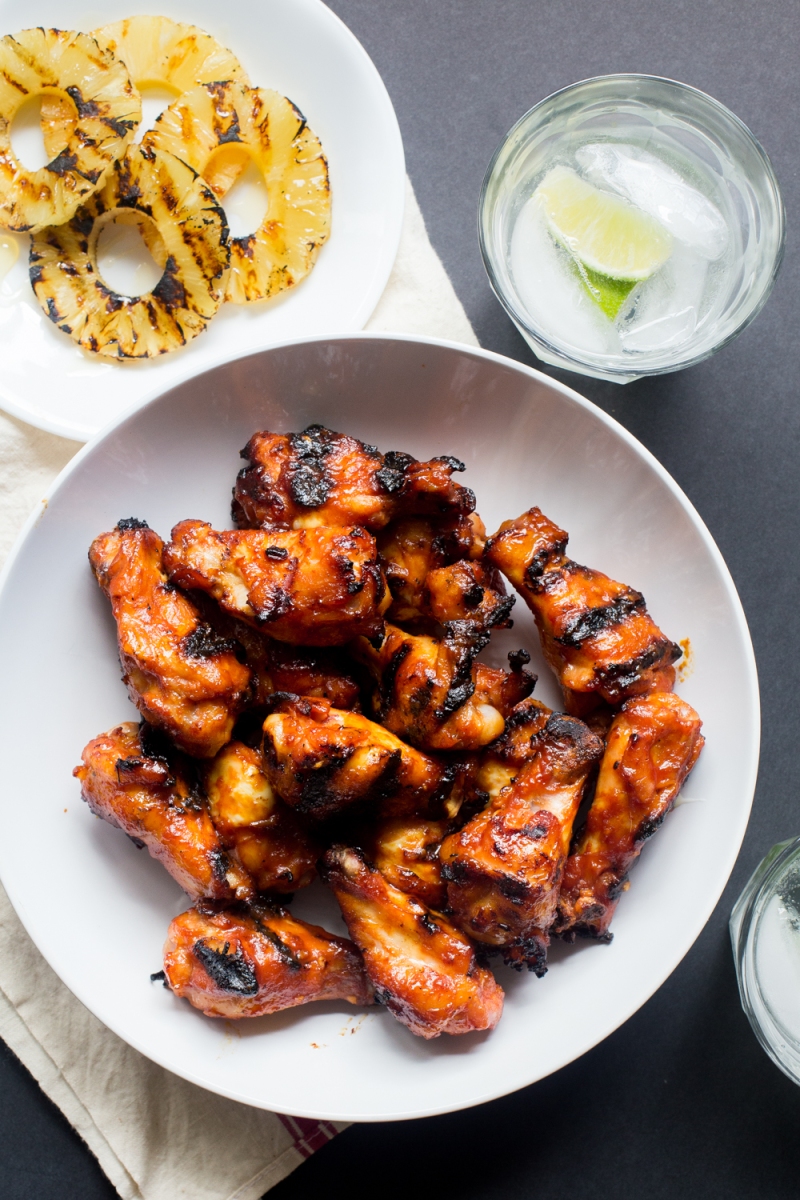
Having used up my vacation days writing a book earlier this year, I wasn’t able to join my wife and son during their summer trip to visit family in Hawaii. While there, they lovingly (teasingly?) texted me photos of all the delicious meals they were enjoying. So for my own little slice of revenge, I developed this recipe for one of Hawaii’s best-known dishes, Huli-Huli Chicken, while they were gone.
“Huli-Huli” translates to “turn, turn” in the Hawaiian language, but this chicken is not a traditional Hawaiian dish. In the 1950s, the head of a Hawaii chicken breeders association, Ernest Morgado, broiled up some teriyaki chicken for a farmers’ meeting. The chicken was a hit, and so he started selling the cooked chickens for local fundraisers. The name “Huli-Huli” comes from the fact that the chickens are cooked between two grills, and are turned as each side finishes cooking. Today, Huli-Huli Chicken is still a staple fundraising tool in Hawaii. Morgado, who passed away in 2002, holds the Guinness world record for the single largest chicken barbecue, cooking 46,386 chicken halves at a school fundraiser in 1981.
Morgado trademarked the name “Huli-Huli” in 1958 and the sauce is still sold today. For a bit of excitement, I decided to make my recipe using wings, to fully capture the sticky-sweet fun of eating this dish. My take on the sauce uses pineapple juice, honey, and apple cider vinegar to lend the chicken its sweet flavor (as opposed to gobs of brown sugar), and a bit of red palm oil will give the dish its signature red color (usually achieved with ketchup).
By the way, Ernest Morgado and I share more than just a love for chicken: he served as a Navy Chief Petty Officer during WWII (I’ve been serving in the Navy since 2000, and was recently promoted to the rank of Master Chief Petty Officer).







